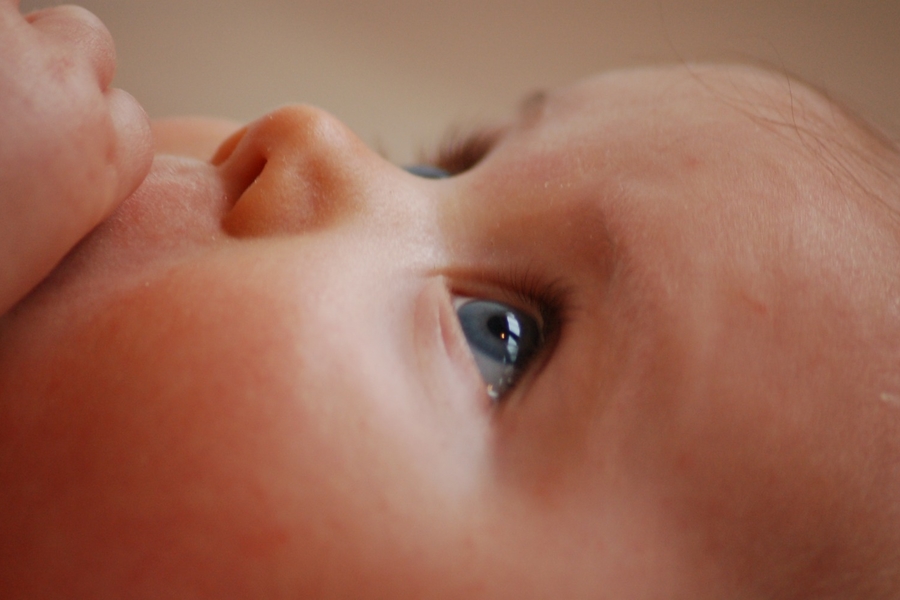
Signs For Identifying If Child Has Amblyopia
15 Feb 2018 | 4 min Read
Babychakra
Author | 1369 Articles
Learn how to spot amblyopia in children early. Amblyopia, if not treated early in childhood, may persist into adulthood and can lead to permanent loss of vision in adult life.
Is amblyopia in kids very common? What are some of the causes?
Amblyopia, or ‘lazy eye’ is the commonest cause of blindness in children. It is a term used when vision in one of the eyes is reduced as either the brain or the eye are not working properly. The eye appears normal, but it is not used perfectly as the brain tends to favor the other eye.
One of the most common causes of amblyopia is the failure of the eye to focus as well as the other one. When the child’s brain receives both a clear and a blurry image, it begins to ignore the blurry one. In the long run, the vision in the blurred eye becomes worse.
In some cases, the eyes do not line up as they normally should. This condition is known as strabismus which can also lead to amblyopia. Such kids see things double as their eyes are unable to focus on a single object. The brain fails to process the image from the misaligned eye compromising on vision further. This misalignment has led to the term “lazy eye.”
What are the symptoms of refractive amblyopia?
Parents often do not notice the symptoms of a lazy eye for a very long time as this only affects one of the eyes. Refractive amblyopia occurs when there is an unequal amount of refractive error in the child’s eyesight. So, it may not make much of a difference straightaway. However, there are some red flags to watch out for, so that parents can diagnose the problem sooner.
Amblyopia diagnosis
- Watch the child as he tries focus on an object. Do either of the eyes wander while the other stays focused on the object?
- Do the eyes work separately instead of together?
- Evaluate the depth perception of the child. Hold an object away and ask the child to reach for it without moving. If the depth perception is normal, the child will grab it. If the child finds the object far enough or fumbles while grabbing it, it could be a problem with depth perception.
- Crossing of eyes
Can amblyopia be corrected?
Yes, amblyopia is correctable. In fact, the earlier the child is diagnosed, the faster is the treatment. The prognosis for amblyopia decreases after the age of 6 years and is likely to become limited if treatment is started after the age of 8 years. The main plan of treatment of amblyopia should focus on:
- Correction of eye problems
- Use of prescription glasses to treat short or long sightedness. They can be used to straighten a squint too.
- Contact lenses may also be used, but may only be suitable for older children
- Encouragement of use of affected eye to restore vision properly
- Using a patch over the good eye so the lazy eye is forced to work. Sometimes patches may be worn along with glasses.
- The amount of time the child needs to wear the patch will depend on the age and severity of the problem.
- Patches are most effective before the age of 6 years.
- Atropine eye drops can be used to blur the vision in the healthy eye which will encourage the use of the lazy eye. However, this is an extreme step which is rarely ever used.
Talk to your eye doctor or pediatrician if you feel the child is experiencing vision problems.
Disclaimer: The information in the article is not intended or implied to be a substitute for professional medical advice, diagnosis or treatment. Always seek the advice of your doctor.
Also read: The beginner’s Care Guide for your baby’s eyes, ears, nose, nails and teeth
A


Related Topics for you
Suggestions offered by doctors on BabyChakra are of advisory nature i.e., for educational and informational purposes only. Content posted on, created for, or compiled by BabyChakra is not intended or designed to replace your doctor's independent judgment about any symptom, condition, or the appropriateness or risks of a procedure or treatment for a given person.
